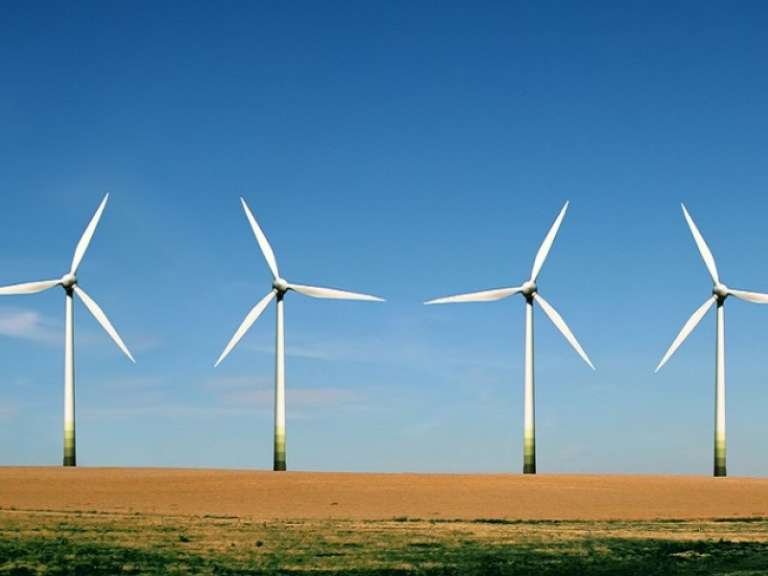Compelling Wind Energy Statistics From Around the Globe
Jeremy BowdenWind energy continues to become more competitive, expanding its share of global energy production.

Last year, 66GW of wind energy capacity was installed across the world, lifting the share of renewables installation to 153GW, or over half of all new capacity, and marking a turning point for the energy sector. Across many parts of the world, technological advances have made onshore wind the most competitive of all renewables, on par with the cheapest conventional generation. However, while its environmental credentials are exemplary, wind energy is intermittent and weather-dependent and therefore tends to have lower load factor than a conventional plant. When it does run at high levels, it can swamp the market and cause price slumps, and it cannot be relied on to always be available at times of peak demand. Advances in storage and demand-side response should help accommodate more wind turbines into our supply networks, and make better use of the power they generate.
The US Department of Energy says that, under existing energy policy, the United States could meet 10 percent of its electricity needs from wind energy by 2020, with development driven by a mix of federal policy incentivizing renewable energy investments, greener states lowering their carbon emissions targets, and corporate and other nonutility buyers aiming to cut carbon pollution.
Wind fuel is free, so operating costs are very low, and technology advances in areas such as longer rotors, taller towers, and advanced controls are driving down costs and improving product reliability. Meanwhile, investor appetite has grown, lowering the cost of capital dramatically, which could allow wind to compete on a level playing field if the policy becomes less supportive.
In neighboring Canada, all provinces and territories must introduce carbon pricing across large areas of their economies by 2018—not just power generation—which will make wind turbines more commercially attractive. Provinces will have the choice of rolling out cap-and-trade systems, or imposing a tax that must hit roughly C$50/US$38 per metric ton by 2022—a charge wind turbines would not have to pay.
Further south, Mexico has pledged a 22 percent emissions cut that will require an estimated 20GW of wind capacity by 2030, reports Scientific American, involving a quadrupling of its wind-power capacity and $46 billion of investment. The country expects to have about 10GW in operation by 2019, up from 2.5GW in 2014. The wind energy focus has been helped by Mexico's historic shift away from a state-controlled energy monopoly, and very low bids in recent capacity auctions.
Across the Atlantic, National Grid reported onshore and offshore wind generated at a record level of more than 10GW for the first time on December 7, 2016 in the UK. The record of 10,104MW was achieved between 2:00 p.m. and 2:30 p.m., and provided 23 percent of Britain's total electricity demand at that time, Energy Voice explains. Britain leads the world in offshore capacity, and the strong performance of the UK sector has been helped by healthy competition, guaranteed offtake agreements, and front-line technology.
While climate change mitigation is a powerful driver for wind, it is not the only one. In many countries, cutting air pollution and diversifying energy supplies to improve energy security play an equally strong role, especially in emerging Asia. According to the International Energy Agency, China accounted for about half the wind additions and 40 percent of all renewable capacity additions in 2015—a year in which it installed wind turbines at a rate of two per hour. Renewables would appear to be leading a transformation of global power markets.
Although the IEA aims to provide its 29 member-nations with impartial advice, it's been criticized for publishing conservative estimates that failed to predict the rapid growth of wind and solar generation, explains Bloomberg. It now expects that the two will account for 64 percent of the 8.6TW of new power generating capacity added worldwide over the next 25 years, and for almost 60 percent of the $11.4 trillion invested.
A report from the Global Wind Energy Council (GWEC) says wind and solar are expected to become the cheapest ways of producing electricity in many countries during the 2020s, and in most of the world in the 2030s. It is also predicted that onshore wind costs are expected to fall 41 percent by 2040, and wind power could reach 2,000 GW by 2030, supplying up to 17–19 percent of global electricity. This would create over 2 million new jobs and reduce CO2 emissions by more than 3 billion metric tons per year.
At this rate, by 2050 it looks like wind power could provide 25–30 percent of global electricity supply.
Alongside renewable energy technologies, the role of gas turbines in the 21st century electricity mix is assured.
Your OEM is key to ensuring you optimize the performance of your equipment. Here are the questions you should ask after the sale.
Maximizing the ROI on heavy duty gas turbines requires a proactive strategy that includes attention and maintenance.